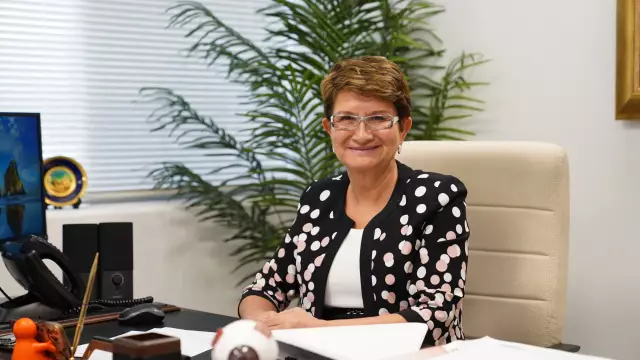- Author Rachel Wainwright [email protected].
- Public 2023-12-15 07:39.
- Last modified 2025-11-02 20:14.
Children's ophthalmologist: specialization and indications for contacting a specialist
Children's ophthalmologist is a doctor who is responsible for the prevention, diagnosis and treatment of eye diseases. Pathological signs in the organs of vision appear gradually, and in most cases, parents cannot recognize them on their own. Therefore, it is so important to regularly visit an ophthalmologist for preventive purposes. If alarming symptoms appear, a doctor should be consulted as soon as possible.

What are the symptoms of going to the doctor
The bulk of pathologies of the organs of vision are diagnosed in early childhood during the period of preventive examinations. But by carefully observing the child in everyday life, parents can identify warning signs themselves. These include:
- different pupil diameters;
- frequent squinting eyes;
- discharge from the eyes, watery eyes;
- redness of the sclera, etc.
The child himself may complain of rapid eye fatigue or that his vision has become worse. Any of the listed symptoms is a direct guide for parents to visit a pediatric ophthalmologist.
If the child is injured or a foreign body has got into his eye, then the doctor's help should be provided urgently. The sooner, the better, since there are known cases of loss of vision due to untimely access to a medical institution.

Terms of planned examinations by a pediatric ophthalmologist
For the first time, parents should get an appointment with an ophthalmologist when their baby is 2-3 months old. Already at this age, modern equipment makes it possible for a specialist to reliably determine whether a patient has serious pathologies, such as glaucoma, cataracts, retinoblastoma, etc.
The next scheduled examinations by a specialist occur at one and three years. From the age of 6-7 years, it is recommended to visit a pediatric ophthalmologist every six months. This is due to the fact that the child begins to study at school, and the load on his eyes increases significantly. In order not to miss the onset of the disease, such regular medical consultations are necessary.

What diseases does the specialist treat?
The specialization of the pediatric ophthalmologist includes a wide range of eye diseases. The main violations of the children's organ of vision include:
- myopia,
- hyperopia
- astigmatism,
- glaucoma,
- cataract.
Myopia is a visual impairment in which a child does not distinguish objects at a distance. At the same time, he sees well at close range. Severe headaches and rapid visual fatigue are often associated symptoms of the disease.
Farsighted children have the opposite problem: they see well at a distance, but problems arise with studying objects at close range. The disease is also accompanied by rapid visual fatigue (especially while reading), there may be burning and pain in the eyes.
Astigmatism is one of the most common visual impairments associated with hyperopia or myopia. The reason for it is the irregular shape of the cornea, which is successfully corrected by the pediatric ophthalmologist by prescribing glasses or lenses. Slight astigmatism may not bring any particular discomfort to the child, showing only a slight blurred vision.
Glaucoma and cataracts are ailments that rarely occur in children. Their risk group is aged people, but there are exceptions. Therefore, the diagnosis of these diseases should be carried out as early as possible, until the organ of vision is significantly damaged.

Strabismus is an eye disease that pediatric ophthalmologists recommend starting at the earliest possible date. Why? Because children very quickly adapt to any of their physiological characteristics, which ultimately leads to a critical suppression of the vision of the squinting eye.
The doctor's specialization also includes the treatment of inflammatory, infectious children's eye diseases. We are talking about barley, blepharitis, conjunctivitis, in which the mucous membrane of the organ of vision is damaged.
How does a pediatric ophthalmologist conduct an appointment?
At the first visit to the ophthalmologist, the determining role is played by how well the parents prepared the baby. If he gets scared, starts to get nervous and cry, the doctor will not be able to carry out the full range of necessary preventive manipulations. Therefore, parents should have a conversation with the child, calm him down as much as possible and set him up in a positive way.
The doctor always starts the appointment with taking anamnesis, diminishing complaints, existing alarming symptoms. Parents (and the child himself, if possible) should answer all these questions with the utmost detail. After the conversation phase, the ophthalmologist proceeds to a direct examination of the patient. With the help of specialized equipment, several parameters of a child are checked at once - visual acuity, color perception, fundus examination, visiometry and others.
Depending on the diagnosis, the appropriate type of therapy is prescribed to the child.

Treatment methods in pediatric ophthalmology
The pediatric ophthalmologist always selects the treatment regimen individually, taking into account the nature of the pathological eye damage, the presence of concomitant health problems in the child. Therapy can be conservative and surgical.
Conservative therapy involves the use of specific medications. Local treatment is used to repair damage to the anterior region of the eyeball. Drops, ointments, medical compresses are used. If necessary, the doctor can connect to them general therapy means - antibiotics, anti-inflammatory and strengthening drugs.
With advanced stages of eye diseases, the doctor prescribes surgical treatment. Taking into account the nature, severity of the pathology, it can be performed both under local and under general anesthesia. After the operation, you should definitely visit an ophthalmologist to make sure there are positive dynamics, to give a number of recommendations regarding the rehabilitation period.
Found a mistake in the text? Select it and press Ctrl + Enter.






